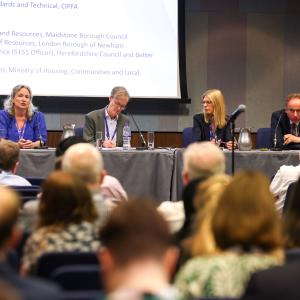The chief secretary to the Treasury claims that the government is making infrastructure investments of historic proportions. Who does he think he's kidding?
In his speech this morning, the chief secretary to the Treasury Danny Alexander promised the 'most comprehensive, ambitious and long-lasting capital investment plans' ever. A bold statement for a government launching a spending round that cuts capital spending by 1.7% and is planning to invest significantly less than its predecessor over the decade. Even the much trumpeted £300 billion of investment means public capital spending will fall in real terms every year from 2015/16.
Investment is very low by recent historical standards. Overall, gross public investment in today’s money will be £450 billion in the 10 years to 2020/21. This compares to £530 billion in the previous decade, if we include (as we should) the capital cost of Private Finance Initiative (PFI) projects. Even as a percentage of overall government spending, the coalition’s record is unimpressive. Despite the hatchet taken to revenue spending since May 2010, gross investment is projected to average about 6.2% of total management expenditure over the decade. This compares to 7.6% (again, including PFI) in the previous ten years.
Alexander promised the biggest public housing programme for 20 years, the largest railway development since Victorian times and the greatest investment in roads since the 1970s. As part of the audience, it was difficult to judge the extent to which we were simply being manipulated, or worse (and just how much public housing was being built in June 1993, nine months after Black Wednesday and with a fiscal deficit of 8%?).
Certainly, the scale of obfuscation is now so large that it is close to impossible even for public finance experts to identify what the government is planning to spend and on what. The chief secretary told us that 'we' – the implication being the government, but the ambiguity of the pronoun ensures parliament is not misled – have built 84,000 affordable homes. This historic programme of state-sponsored house-building seems to have passed me by.
The Department of Health’s capital budget is rising he says, allowing the redevelopment of the Royal Liverpool Hospital. Yet this is actually a PFI scheme (and thus financed outside of the DH capital budget) and, like many of the things Alexander is keen to take credit for, was initiated by the Labour government. We learned that the 'extra money' committed to the Department for Education will allow 261 new schools to be built ahead of schedule. What this means when the figures show that Mr Gove’s department is suffering a huge real-terms cut in his capital budget is not clear.
The task of obfuscation has been made easier by the growing complexity of infrastructure spending in the UK, which incorporates a diverse mix of public, private and quasi-private ownership structures to a bewildered public. Much of the recent increases in capital spending have been eaten up by buying out the Private Finance 2 (PF2) programme (the successor to PFI), which is shrinking due to a lack of faith that it will get off the ground among departments with urgent investment requirements.
This buy-out can be presented as a big increase in government largesse. The PF2 component of the priority schools building programme has been cut from £1.75bn to £700m (requiring the balance to come from public budgets). The decision was taken in March to publicly finance the Crossrail rolling stock deal, which had been slated as a PF2. And the Ministry of Defence’s plans to improve the barracks for soldiers returning from Afghanistan has been switched from PF2 to public capital. Together, these U-turns require £3bn of additional government capital expenditure. But, since they replace infrastructure financing that was going to take place anyway under the PF2 programme, they provide no net addition to capital expenditure, and no additional economic stimulus, despite all the talk of plan A+.
'Most past governments of every colour have prioritised short-term convenience over the long-term national interest,' the chief secretary said. 'Today we have changed that.' They have not. From an investment spending point of view, the best that can be said is that things could have been worse. At least it was cut by less than in the 2010 spending review. Then, the Chancellor, George Osborne, slashed 20.4% from public sector gross investment, while he lopped off only a further 1.7% on Wednesday. Perhaps that might be seen as some sort of progress.









